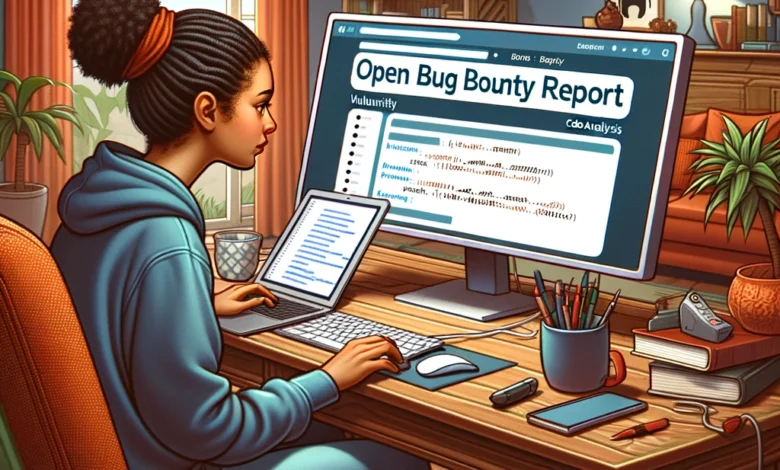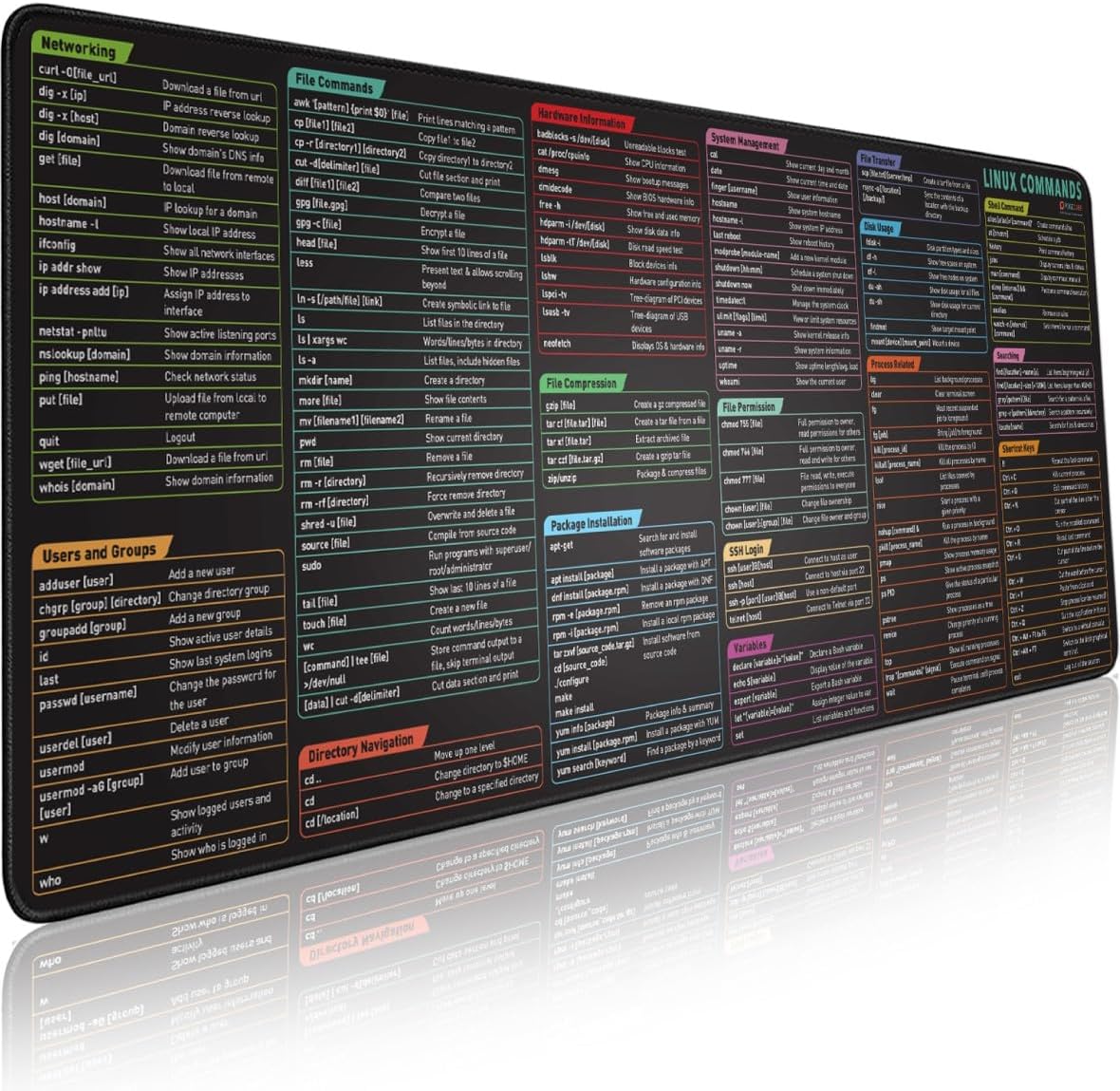Effective Reporting for Open Bug Bounty: A Beginner's Guide
Navigating the Unique Requirements of Open Bug Bounty Reports

Hey, BugBusters! Ready to dive into the world of Open Bug Bounty? This platform is a bit different from the others, and that’s what makes it so exciting. Open Bug Bounty stands out because of its open disclosure policy. That means your findings contribute to a more secure web for everyone, and you get to be a part of something bigger while earning rewards. Pretty cool, right?
So, why should you care about writing top-notch reports? Effective reports boost your acceptance rates and speed up the validation process, meaning quicker rewards in your pocket. Plus, high-quality reports build your reputation as a skilled and reliable bug hunter. It’s like being the rock star of cybersecurity!
Think of it this way: each report you write is like a ticket for better rewards and recognition. The better you detail your findings, the more you stand out in the community. And who doesn’t want to be known as the go-to expert for discovering and reporting vulnerabilities?
In this guide, we’ll break down everything you need to know to write killer reports for Open Bug Bounty. From understanding their specific guidelines to crafting clear reproduction steps and communicating the impact of your discoveries, we’ve got you covered. We’ll even provide you with a template to get you started and share examples of high-quality reports that hit all the right notes.
Ready to level up your bug-reporting game? Let’s get started and turn those bug bounties into serious wins!
Understanding Open Bug Bounty’s Reporting Guidelines
Alright, BugBusters, now that we’re pumped up about Open Bug Bounty, let’s dive into their reporting guidelines. Knowing what Open Bug Bounty looks for in a report is crucial to quickly getting your findings accepted and validated. Here’s the breakdown of the critical elements you need to nail.
Vital Elements of Open Bug Bounty’s Reporting Guidelines
Detailed Technical Description:
Your report should start with a clear and detailed description of the vulnerability. This means explaining the bug’s location and how it affects the application.
Reproduction Steps:
This is where you get to show off your detective skills. Document every step needed to reproduce the bug. The goal is to clarify that anyone with minimal technical knowledge can follow along and replicate the issue.
Proof-of-Concept (PoC) Evidence:
Including PoC evidence like screenshots, videos, or code snippets can make a huge difference. This visual proof helps the team quickly understand the vulnerability and its impact.
Impact Analysis:
Explain the potential risks and consequences of the vulnerability. Why should the company care? What could an attacker achieve by exploiting this bug? The more context you provide, the better.
Mitigation Suggestions:
Offering suggestions for fixing the vulnerability shows that you’ve thought through the issue thoroughly. It also helps the development team address the problem more efficiently.
Importance of Following These Guidelines
Following these guidelines isn’t just about ticking boxes. It’s about making your report as useful and actionable as possible. When you adhere to Open Bug Bounty’s standards:
- Higher Acceptance Rates: Your reports are more likely to be accepted if they meet the platform’s expectations.
- Quicker Validation: Detailed and precise reports can be validated faster, leading to quicker rewards.
- Professional Reputation: Consistently following guidelines builds your reputation as a reliable and professional bug hunter.
Overview of What Open Bug Bounty Looks For
- Clarity: Your report should be easy to read and understand. Avoid jargon and keep your language straightforward.
- Detail: Provide as much relevant information as possible. Don’t assume the reviewer knows what you know.
- Evidence: Strong PoC evidence can make or break your report. Make sure your evidence is clear and directly related to the vulnerability.
- Professionalism: Present your findings in a professional manner. This means being respectful, thorough, and thoughtful in your reporting.
By understanding and following these guidelines, you’re setting yourself up for success on Open Bug Bounty. Ready to move on to crafting those all-important reproduction steps? Let’s keep the momentum going!
Crafting Clear Reproduction Steps
Now it’s time to get into the heart of your report—crafting those reproduction steps. This part is all about clarity and detail. The goal is to ensure anyone reading your report can easily follow along and reproduce the vulnerability. Let’s break down how to do this effectively.
Step-by-Step Approach to Documenting Reproduction Steps
Step 1: Identify the Vulnerability Location
Start by clearly stating where the vulnerability is located within the application. This gives the reviewer a precise starting point.
Example:
Navigate to the user profile page on the web application.
Step 2: Provide Detailed Navigation Instructions
Detail the exact steps needed to reach the point where the vulnerability can be tested. Be as specific as possible.
Example:
1. Log in to the application using valid credentials.
2. Click on the Profile tab in the top navigation bar.
3. Scroll down to the Bio section.
Step 3: Describe the Vulnerability Exploitation
Explain the actions needed to exploit the vulnerability. Include any specific inputs, payloads, or interactions required.
Example:
4. In the Bio text field, enter the payload <script>alert('XSS')</script>.
5. Click the Save button at the bottom of the page.”
Step 4: Highlight the Expected Outcome
Describe what should generally happen if there were no vulnerabilities.
Example:
6. Normally, the inputted text should be sanitized and saved as plain text in the ‘Bio’ section.”
Step 5: Demonstrate the Actual Outcome
Explain what actually happens due to the vulnerability. This is where you highlight the issue.
Example:
7. Instead of sanitizing the input, the script executes immediately, displaying an alert box with the XSS.
Emphasizing Clarity and Detail
- Avoid Assumptions: Don’t assume the reviewer knows what you’re thinking. Spell out every step clearly.
- Be Sequential: List steps in the exact order they should be performed. This makes it easier to follow.
- Use Visual Aids: Screenshots, videos, or GIFs can enhance clarity. Annotate them to highlight necessary actions or results.
Practical Example of Clear Reproduction Steps
Scenario: SQL Injection in the login form
Reproduction Steps:
- Open the Login Page:
Navigate towww.example.com/login. - Enter SQL Payload:
In the ‘Username’ field, enter the payload' OR '1'='1. Leave the ‘Password’ field blank. - Submit the Form:
Click the ‘Login’ button. - Expected Outcome:
The application should return an error indicating invalid login credentials. - Actual Outcome:
The application grants access to the user dashboard without requiring valid credentials, indicating an SQL Injection vulnerability.
Visual Aids:
- Screenshot: Include a screenshot of the login form with the SQL payload entered.
- Video: A short video showing the steps from payload entry to unauthorized access.
Importance of Detail and Clarity
By being thorough and clear, you ensure that anyone can reproduce the issue, whether they are part of the security team or another researcher. This helps speed up the validation process and increases the likelihood of your report being accepted.
By following this step-by-step approach, you’ll craft reproduction steps that are clear, detailed, and easy to follow. Ready to communicate the impact of your vulnerabilities? Let’s dive into that next!
Communicating the Impact of Vulnerabilities
BugBusters, you’ve nailed down the reproduction steps. Now, let’s talk about communicating the impact of the vulnerabilities you discover. This is where you explain why the vulnerability matters and what risks it poses. A well-articulated impact statement can make your report stand out and underscore the severity of the issue.
How to Assess the Impact of a Vulnerability
1. Determine the Exploitability:
- Ease of Exploitation: How difficult is it to exploit this vulnerability? Does it require specific conditions, or can anyone manipulate it easily?
- Tools Needed: Are tools readily available to exploit this vulnerability, or does it require advanced knowledge and skills?
Example:
“The SQL Injection vulnerability can be easily exploited using basic SQL commands without any specialized tools.”
2. Identify the Potential Consequences:
- Data Exposure: Could sensitive data be exposed or stolen?
- System Compromise: Could the vulnerability allow unauthorized access or control over systems?
- Service Disruption: Could it lead to denial of service or disruption of normal operations?
Example:
This vulnerability allows attackers to bypass authentication, granting unauthorized access to user accounts and sensitive information.
3. Consider the Scope:
- Affected Users: How many users could be impacted by this vulnerability?
- Business Impact: Could this affect the organization’s reputation, lead to financial loss, or result in regulatory penalties?
Example:
Given that the login form is accessible to all users, this vulnerability could impact the entire user base, leading to significant data breaches and potential legal repercussions.
Writing Clear and Compelling Impact Statements
1. Be Specific and Concise:
- Clearly state the potential impact without unnecessary jargon. Focus on what matters most.
Example:
“Exploiting this vulnerability allows attackers to access any user’s account, exposing personal information and potentially leading to identity theft.”
2. Use Real-World Scenarios:
- Provide hypothetical scenarios to illustrate the potential consequences. This helps stakeholders understand the real-world implications.
Example:
An attacker could use this vulnerability to log into a user’s account, steal their personal data, and make unauthorized transactions.
3. Highlight Severity:
- Use appropriate terms to indicate the severity (e.g., critical, high, medium, low) and back it up with reasons.
Example:
This is a critical vulnerability due to the ease of exploitation and the high risk of unauthorized data access.
Tips for Writing Effective Impact Statements
- Context is Key: Provide enough context to make the impact understandable. Explain how the vulnerability could be exploited in the context of the application.
- Be Realistic: While it’s important to highlight the risks, avoid exaggerating the impact. Stick to plausible scenarios.
- Use Quantitative Data: Where possible, quantify the impact using numbers (e.g., “This could affect up to 10,000 users”).
Example of a Well-Written Impact Statement
Scenario: Cross-Site Scripting (XSS) vulnerability in a comment section
Impact Statement:
Exploiting this XSS vulnerability allows an attacker to execute arbitrary JavaScript in the context of other users’ browsers. This can lead to session hijacking, defacement, or redirecting users to malicious websites. Given that the comment section is widely used, this vulnerability could impact many users, posing significant risks to user data and the application’s integrity.
By effectively communicating the impact of the vulnerabilities you discover, you help stakeholders understand the urgency and importance of addressing these issues. This strengthens your report and enhances your reputation as a thorough and professional bug hunter.
Ready to learn how to utilize the Open Bug Bounty template to tie all this together? Let’s move on to that next!
Utilizing the Open Bug Bounty Template
Now that you’ve mastered crafting clear reproduction steps and communicating the impact of vulnerabilities, it’s time to combine them using the Open Bug Bounty template. This template helps ensure your reports are structured, comprehensive, and easy to review. Let’s walk through each section and learn how to use this powerful tool.
Sections of the Open Bug Bounty Reporting Template
1. Title:
- What to Include: A concise and descriptive title for the vulnerability.
- Example: SQL Injection Vulnerability in Login Form
2. Summary:
- What to Include: A brief overview of the vulnerability, including its type, location, and potential impact.
- Example: An SQL Injection vulnerability was discovered in the login form, allowing attackers to bypass authentication and access user accounts.
3. Vulnerability Description:
- What to Include: A detailed description of the vulnerability, explaining what it is, where it is located, and how it affects the application.
- Formatting: Use clear and precise language. Avoid jargon and ensure it’s understandable even for non-technical readers.
- Example: The login form fails to properly sanitize user inputs, allowing SQL commands to be executed in the database. This vulnerability can be exploited by entering a specially crafted input in the username field.
4. Reproduction Steps:
- What to Include: Step-by-step instructions on how to reproduce the vulnerability.
- Formatting: Number each step for clarity and include any necessary screenshots or videos.
- Example:
- Navigate to
www.example.com/login. - Enter
' OR '1'='1in the username field. - Leave the password field blank.
- Click the ‘Login’ button.
- Observe that access is granted without valid credentials.
- Navigate to
5. Proof-of-Concept (PoC):
- What to Include: Evidence demonstrating the vulnerability, such as screenshots, code snippets, or videos.
- Formatting: Ensure PoC materials are transparent and directly related to the described steps.
- Example: A video showing the payload entry and the subsequent unauthorized access.
6. Impact:
- What to Include: An analysis of the vulnerability’s potential impact, including how it can be exploited and the consequences.
- Formatting: Use bullet points or short paragraphs to maintain clarity.
- Example:
- Unauthorized access to user accounts.
- Potential data theft and privacy violations.
- Risk of further exploitation by malicious actors.
7. Mitigation Suggestions:
- What to Include: Recommendations on how to fix the vulnerability.
- Formatting: Provide clear and actionable steps.
- Example:
- Implement parameterized queries to prevent SQL injection.
- Sanitize and validate all user inputs.
- Conduct regular security audits to identify similar vulnerabilities.
Customizing the Template for Different Types of Vulnerabilities
- Adapt the Format: While the basic structure remains the same, adjust the details to fit the type of vulnerability. For instance, a Cross-Site Scripting (XSS) vulnerability might require more emphasis on the specific context and user interactions.
- Use Appropriate Examples: Include relevant examples that highlight the specific type of vulnerability. For instance, a different PoC method for XSS can be used compared to SQL injection.
- Adjust Impact Analysis: Tailor the impact analysis to the type of vulnerability, emphasizing different risks based on the exploitability and consequences.
Tips for Using the Template Effectively
- Be Thorough: Don’t leave out any details. The more comprehensive your report, the easier it is for the reviewing team to understand and validate the issue.
- Stay Organized: Keep your sections well-structured and logically ordered. This makes your report easier to read and follow.
- Proofread: Double-check your report for any errors or omissions. A polished report reflects your professionalism and attention to detail.
By effectively utilizing the Open Bug Bounty template, you ensure that your reports are well-structured, comprehensive, and impactful. This increases the chances of accepting your findings and builds your reputation as a meticulous and professional bug hunter.
Ready to see some high-quality reports in action? Let’s move on to examples of successful reports submitted on Open Bug Bounty!
Examples of High-Quality Reports on Open Bug Bounty
BugBusters, now that you’re equipped with the tools and knowledge to craft stellar reports, let’s look at some real-world examples of high-quality submissions on Open Bug Bounty. These examples will highlight the key elements that make these reports stand out and meet Open Bug Bounty’s standards.
Example 1: SQL Injection Vulnerability
Title: SQL Injection Vulnerability in Login Form
Summary:
An SQL Injection vulnerability was discovered in the login form, allowing attackers to bypass authentication and access user accounts.
Vulnerability Description:
The login form fails to properly sanitize user inputs, allowing SQL commands to be executed in the database. This vulnerability can be exploited by entering a specially crafted input in the username field.
Reproduction Steps:
- Navigate to
www.example.com/login. - Enter
' OR '1'='1in the username field. - Leave the password field blank.
- Click the ‘Login’ button.
- Observe that access is granted without valid credentials.
Proof-of-Concept (PoC):
- Video: A video demonstrating the payload entry and the resulting unauthorized access.
- Screenshot: A screenshot of the payload entered in the login form.
Impact:
- Unauthorized access to user accounts.
- Potential data theft and privacy violations.
- Risk of further exploitation by malicious actors.
Mitigation Suggestions:
- Implement parameterized queries to prevent SQL injection.
- Sanitize and validate all user inputs.
- Conduct regular security audits to identify similar vulnerabilities.
Why It Stands Out:
- Detailed Reproduction Steps: Clear and easy to follow, ensuring anyone can reproduce the issue.
- Strong PoC Evidence: Visual proof makes it undeniable.
- Comprehensive Impact Analysis: Explains the severity and potential consequences clearly.
Example 2: Cross-Site Scripting (XSS) Vulnerability
Title: Stored XSS in User Profile Bio
Summary:
A Stored Cross-Site Scripting (XSS) vulnerability was found in the user profile bio section, allowing attackers to execute arbitrary JavaScript.
Vulnerability Description:
The user profile bio input fails to sanitize user input, enabling the storage and execution of malicious scripts.
Reproduction Steps:
- Log in to the application using valid credentials.
- Navigate to the user profile edit page.
- In the ‘Bio’ text field, enter
<script>alert('XSS')</script>. - Click the ‘Save’ button.
- Navigate to the user’s profile page to see the payload executed.
Proof-of-Concept (PoC):
- Video: A video showing the payload being entered into the ‘Bio’ field and the alert box executing on the profile page.
- Screenshot: A screenshot of the alert box displayed on the profile page.
Impact:
- Execution of arbitrary JavaScript in the context of other users’ sessions.
- Potential for session hijacking, data theft, or phishing attacks.
- Risk of defacement or malicious redirections.
Mitigation Suggestions:
- Implement proper input validation and output encoding.
- Use security libraries to sanitize user inputs.
- Regularly test for XSS vulnerabilities using automated tools.
Why It Stands Out:
- Comprehensive Description: Clearly explains the vulnerability and its location.
- Effective Use of PoC: Visual evidence that confirms the vulnerability.
- Detailed Impact Analysis: Highlights the risks and potential consequences.
Example 3: Insecure Direct Object Reference (IDOR)
Title: IDOR in Account Settings Allows Access to Other Users’ Data
Summary:
An Insecure Direct Object Reference (IDOR) vulnerability was identified in the account settings, allowing unauthorized access to other users’ data.
Vulnerability Description:
The application does not properly enforce access controls, allowing users to modify URL parameters and access other users’ data.
Reproduction Steps:
- Log in to the application.
- Navigate to the account settings page.
- Change the user ID parameter in the URL to another user’s ID.
- Observe that the account settings page displays data for the other user.
Proof-of-Concept (PoC):
- Video: A video showing the URL modification and the resulting unauthorized access to another user’s account settings.
- Screenshot: A screenshot of the account settings page displaying another user’s data.
Impact:
- Unauthorized access to sensitive user information.
- Potential privacy violations and data breaches.
- Risk of further exploitation through the accessed data.
Mitigation Suggestions:
- Implement proper access controls to ensure users can only access their own data.
- Use secure coding practices to validate user permissions.
- Regularly audit and test access controls.
Why It Stands Out:
- Clear Steps: Detailed and logical steps to reproduce the vulnerability.
- Visual Proof: PoC evidence that vividly demonstrates the issue.
- Thorough Impact Analysis: Explains the real-world implications of the vulnerability.
These examples show how detailed reproduction steps, strong PoC evidence, and precise impact analysis make a bug report effective. Use these reports as benchmarks to improve your submissions and increase your success on Open Bug Bounty.
Ready to wrap it all up? Let’s move on to the conclusion and inspire you to elevate your bug-reporting game!
Elevate Your Bug Reporting Game on Open Bug Bounty
Hey BugBusters, we’ve covered a lot of ground on how to craft top-notch reports for Open Bug Bounty. Let’s take a moment to recap the critical points and inspire you to elevate your bug-reporting game to the next level.
Recap of Key Points
- Follow Open Bug Bounty’s Guidelines:
- Adhering to the platform’s specific reporting requirements ensures your reports are complete and meet the necessary standards for acceptance.
- Write Clear and Detailed Reports:
- Clarity and detail are your best friends. Every element must be thorough and easy to follow, from comprehensive technical descriptions to precise reproduction steps.
- Use Proof-of-Concept (PoC) Evidence:
- Intense PoC videos and screenshots make your reports more compelling and help reviewers quickly understand the vulnerabilities.
- Communicate the Impact Effectively:
- Clearly articulate the potential risks and consequences of the vulnerabilities you discover. This helps prioritize the issue and underscores its importance.
- Utilize the Open Bug Bounty Template:
- The template is there to help you structure your reports efficiently. Use it to ensure you don’t miss any critical information and format your findings professionally.
Applying Tips and Best Practices
Applying the tips and best practices we’ve discussed can significantly enhance your success on Open Bug Bounty. Here’s how:
- Consistency is Key: Follow these guidelines to build a reputation as a meticulous and reliable bug hunter.
- Stay Updated: Keep up with the latest trends in vulnerability reporting and continuously refine your skills.
- Engage with the Community: Share your experiences, learn from others, and contribute to the collective knowledge of the bug bounty community.
Long-Term Benefits of High-Quality Reporting
Investing time and effort into crafting high-quality reports pays off in numerous ways:
- Increased Acceptance Rates: Well-structured and detailed reports are more likely to be validated and accepted.
- Faster Rewards: Clear and comprehensive reports facilitate quicker review and validation, leading to faster payouts.
- Professional Growth: Developing strong reporting skills enhances your professional reputation and opens doors to more opportunities and higher bounties.
By mastering the art of bug reporting on Open Bug Bounty, you contribute to a safer digital world and advance your cybersecurity career. So, apply these insights to your reports and watch your success soar. Share your journey with the BugBustersUnited community, and let’s continue to raise the bar together. Happy hunting, BugBusters!






